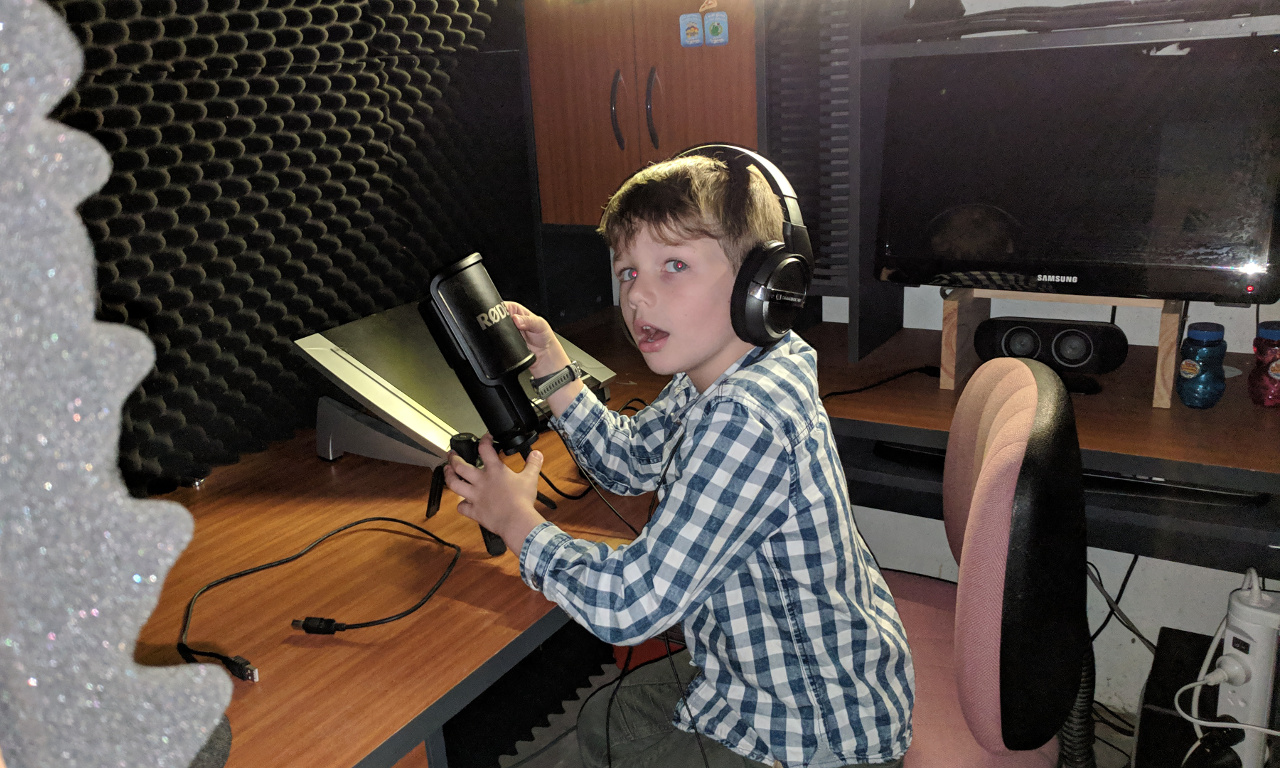I should say a few words about my choice of microphone for recording the audiobook. The site says that the NT-USB has a JFET impedance converter with bipolar output buffer. To tell you the honest truth, I have no idea what means in terms of audio quality or pickup or fidelity. I’m sure there’s an audiophile out there who knows and you’d be doing me a solid by explaining what it means.
What I can say, just from using the microphone in the booth, is that I absolutely love it.
When I was a little tacker, I discovered the joy of recording my voice on an old cassette player. You’d press the record and play button down, talk into the little mic bit and then hit stop, rewind, play again and, hey! that’s me! Joy! Wow! Ew, is that what I sound like? Really?
The scratchiness of the recording was evident. The hiss and hum, and the clunk of the buttons as you fumbled about to press them, it all meant that recording on a cassette player was a novelty at best.
Then came the microphone. Wow, this is one of those things they use on TV during the sports, right? Yeah, same thing. Kinda. It wasn’t much to look at, just a beaten up, battery powered pencil mic that you clicked onto the cassette player and fed in the vocals. The quality that came from using it was noticeably better, to the point where you could almost believe you were recording sound like the professionals. At least, that’s what I thought when I was six.
Fast-forward to now, and I’ve got this Rode beasty looking at me in the sound booth. It’s nothing too complicated to look at – there’s a stand, a pop-shield, a USB cord dangling from the bottom and a little knob on the side. Plug it in and a little light appears from behind the grill, letting me know it’s time to get to work.
One of the things I really, really like about it, apart from the simplicity of it all, is the headphone jack on the side. My first thoughts were, “Why? Why do I need a headphone jack if I’m talking? Is that for listening to the music to do karaoke? Is it to push in white noise?” It turns out, among other things, the headphone jack is so I can monitor what I’m saying in real-time.
Sounds silly? I thought so, too, until I tried it. I talk, and I hear myself in the headphones. Wait, you say, if you talk, you can hear yourself, anyway. Yeah, but not the same as if you were talking to yourself outside of yourself. That sounds wrong, but it goes back to that time where you record your voice and play it back and think, “Is that what I sound like?” For whatever reason (audiophiles, step up) the voice that you have inside your head when you talk is not the voice that others hear.
Bizarre, I know, but it’s true.
So while I’m speaking, I can hear exactly as I sound, while I’m speaking. And let me tell you, it’s an eye-opener and a time-saver. No longer do I need to play back what I’ve recorded to hear how it sounds, I can hear it straight away and correct myself before moving on.
I’m sure the headphones can be used for karaoke or voice-overs, since there’s a little dial above the jack to adjust how much sound comes from the computer and how much comes from the microphone itself, so you can mix in and hear just how you’re sounding. Pretty neat, it you ask me.
The best thing about the mic, though, is the quality of the sound. I’ve experimented a bit, leaning forward and back, speaking loudly and whispering, and the mic happily grabs all the sounds, all of them, from the loudest yell to the tiniest nose-whistle. It gets the rain on the roof outside the booth, the hammering of the guy next door. That’s ok, though, because I can trim out background noise with software afterwards, and adjust the floor to remove unwanted fluff.
All things considered, I’m well chuffed with my choice of mic, and I’m looking forward to punishing it over the next few weeks.

